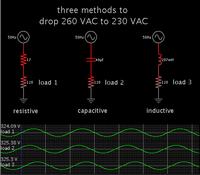eeHassan
Member level 2
- Joined
- Jan 28, 2011
- Messages
- 52
- Helped
- 0
- Reputation
- 2
- Reaction score
- 1
- Trophy points
- 1,288
- Location
- Lahore, Pakistan
- Activity points
- 1,615
Hi everyone,
I am using Mercury 1000va inverter powered by 12V battery for storing power in case of power failure (which is quite common in Pakistan). However I am facing a problem that is when the main supply voltage goes above 250V the ups goes into backup mode i.e instead of charging the battery it starts draining it and keeps running like this until the voltage comes down to 230V again. In my house the main voltage is normally above 240V and sometimes even 260V so my UPS does not charge the batteries. I need to use some simple and cost effective techniqe to reduce the input voltage only for the ups may be by connecting something in series etc...
Any effective suggestions please
I am using Mercury 1000va inverter powered by 12V battery for storing power in case of power failure (which is quite common in Pakistan). However I am facing a problem that is when the main supply voltage goes above 250V the ups goes into backup mode i.e instead of charging the battery it starts draining it and keeps running like this until the voltage comes down to 230V again. In my house the main voltage is normally above 240V and sometimes even 260V so my UPS does not charge the batteries. I need to use some simple and cost effective techniqe to reduce the input voltage only for the ups may be by connecting something in series etc...
Any effective suggestions please
